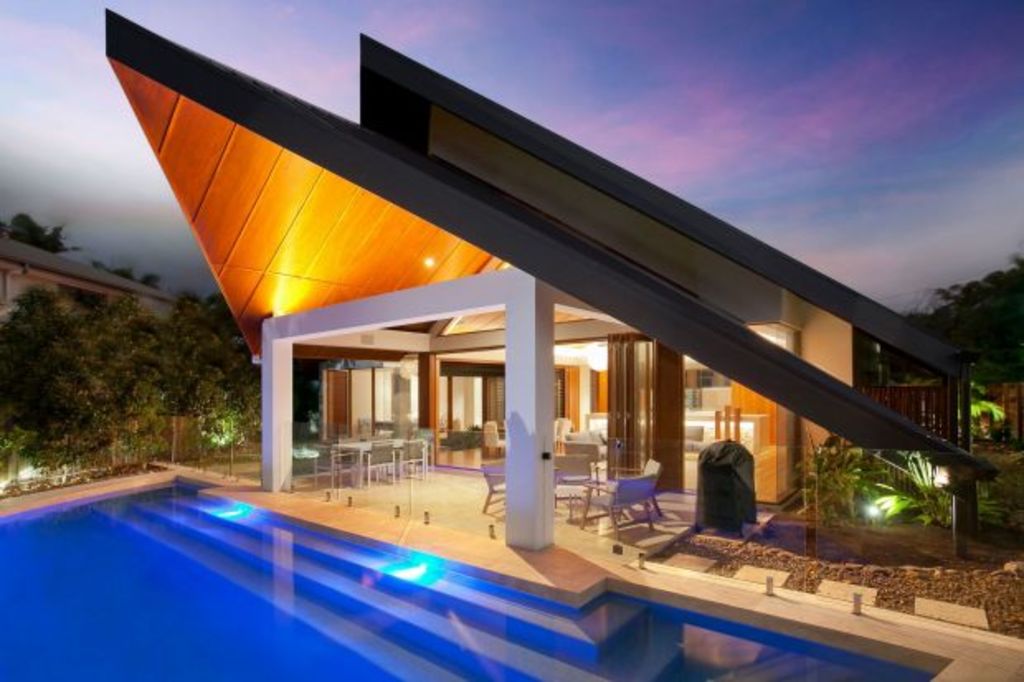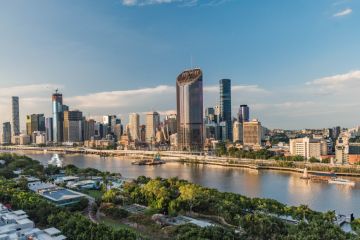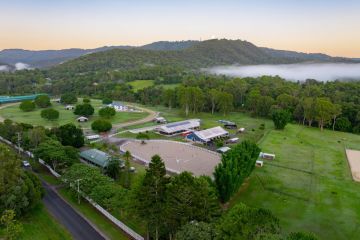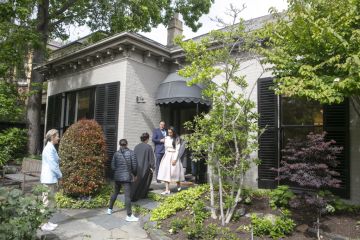Traditional tropical architecture peaks on Sunshine Coast

Building designer Chris Clout had to push, persuade and persevere to design and build a house this dramatic for an empty-nest couple relocating from Mackay to Queensland’s Sunshine Coast.
After finding them the corner block and listening to their big dreams on a not-so-big budget for a resort style home that might remind them of holidays in Bali, Fiji or Thailand, Clout told the clients, “if you let me be a bit creative I’ll design it to be an award winner”.
He did better than that. Sunshine Villa first won the regional Queensland Building Designer Association’s new house with $700,000 to $1 million build cost, then the same state award, and in early October, Clout says, “it went right through to win the BDA’s best house in Australia”.
No doubt it’s striking, crafted to the nth degree as a dual pavilion building of three bedrooms with a study-guest room, that progresses through airy, apexed spaces to the half-moon pool beyond the canopied back deck.
Facing the 35-degree slopes of “the thrusting great roofs” to privatise the street side, those sensational canopies also provide shade from the late afternoon sun. Lining in ply their undersides that at the central peaks take interior headroom to “the height limit of a double level home”, Clout bought the rooflines “right down to sit under the fenceline. They virtually come down to the ground in places.”
Had it been a more conventional two-storey house with flat rooves and straight walls, he reckons it would have looked and felt a lot smaller on what is essentially a standard house block. “But I didn’t want to give them a home like everyone else … like a house that could be in Melbourne or Sydney”.
By making his clients a home based on the time-tested lines of traditional tropical architecture, the long house archetype that has recurred through Asia and the Pacific for millennia for the sensible reason that it works so perfectly in steamy climates, Clout has put in place a most suitable house that can be opened to the breezes, that sucks heat up into the building’s heights and feels “resorty, beachy, tropical and modern”.
Had he not “done battle with the council” and stood his ground against all the money-saving hints to make compromises; had he not persuaded an extra few hundred thousand dollars to carry through virtually the first design sketch that appeared on the drawing board of this carpenter turned designer, it might not have emerged as wonderful as a home “that will pay them (the clients) off in the long run”.
“Our best work,” he says, “is always what comes out of following through. I had promised them if they let me I would make it spectacular.”







We recommend
We thought you might like
States
Capital Cities
Capital Cities - Rentals
Popular Areas
Allhomes
More







